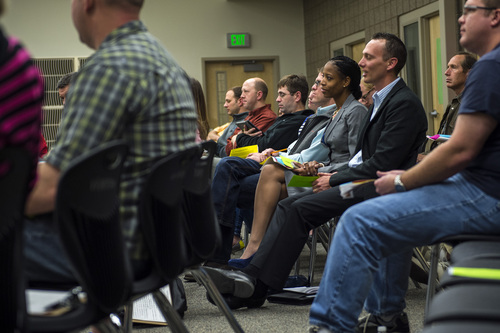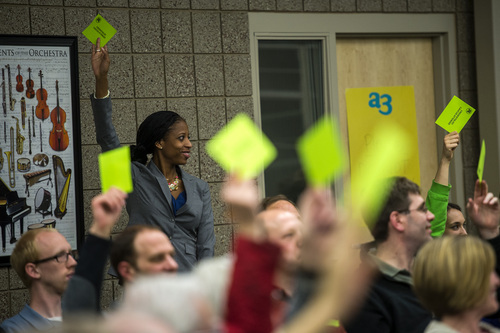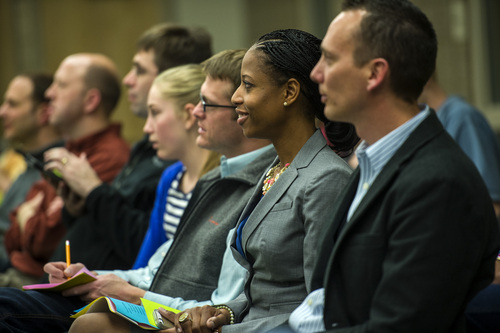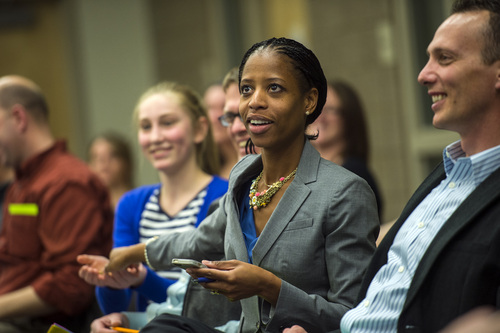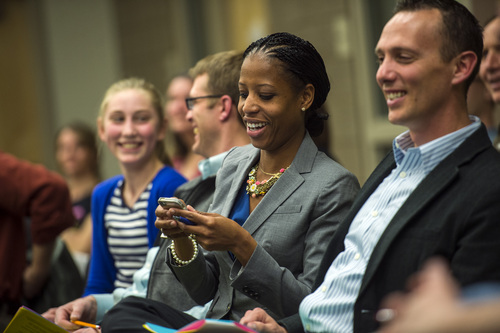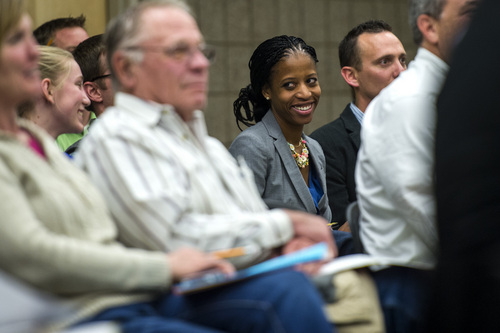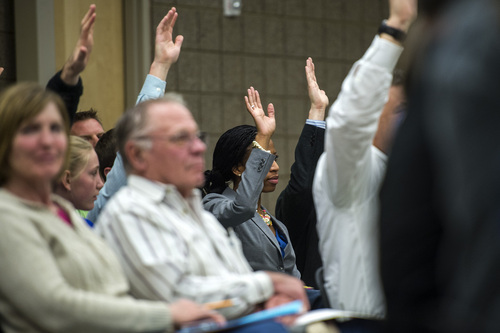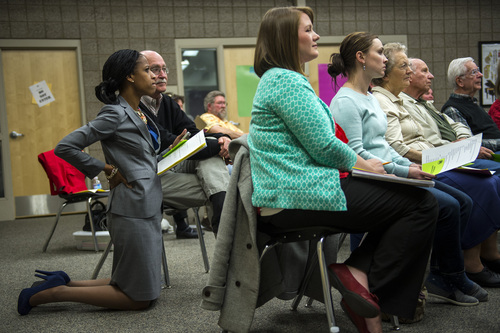This is an archived article that was published on sltrib.com in 2014, and information in the article may be outdated. It is provided only for personal research purposes and may not be reprinted.
Saratoga Springs • Neighbors grilled neighbors on tax policy, the death penalty and the very system Utah uses to govern itself Thursday evening, the first step in Utah's long process to determine which candidates will appear on the ballot this November.
One such aspirant sat among them in the orchestra room of Vista Heights Middle School. Mia Love, a Republican running for Congress, schmoozed with her neighbors before the meeting and made a few asides during the friendly meeting, but she made no move to get herself elected as a delegate.
"Others should have an opportunity to be involved," said Love, a former mayor of Saratoga Springs.
Down in the middle school's cavernous auditorium sat Tony Burdette, who had never felt he had the time to participate in the caucus meetings held every two years. He had his boys to take care of and his business to attend to, but this time he felt compelled to participate.
For the past three weeks, he stood before the Mormon ward he oversees as a bishop and read a letter from LDS Church leaders urging adherents to go to these political gatherings.
"I felt if I was asking them to come, I better support it, too," Burdette said. "I felt ashamed, in a sense, because I don't know how it works. I hear about it every year."
Here's generally how it worked: Burdette and Love were among hundreds of people from Saratoga Springs, Eagle Mountain and Lehi who gathered at the middle school, and they were just a small slice of the thousands who attended similar meetings in homes, churches, government buildings and schools throughout the state. These registered Republicans elected roughly 4,000 delegates who are expected to attend the state convention on April 26.
These GOP delegates, and the 2,600 Democratic delegates selected in similar meetings Tuesday night, have a power that no future delegates will wield because of a change in Utah's election process. This is the last time delegates will have the sole authority to determine if a primary election will take place and who appears on the ballot.
As it now stands, a candidate needs the backing of 60 percent of the delegates to avoid a primary election in June. If no one meets that threshold, the top two contestants square off to represent their party in the general election.
A new law signed by Gov. Gary Herbert earlier this month will allow candidates to bypass this caucus-convention system as long as they gather enough signatures. That law, which takes effect with the 2016 election, was a carefully crafted compromise between state lawmakers, who favored the current system, and a bipartisan group called Count My Vote, led by former Gov. Mike Leavitt, that wanted an alternative way for candidates to reach a public vote.
Caucus-goers in Saratoga Springs on Thursday asked delegate candidates about their views on Count My Vote, getting mixed results. Some defended the current system, while others were open to an alternative method to reach the ballot.
About 60 people participated in the Saratoga Springs 1st Precinct, which included Love. That's a fairly large group historically, but only about half the crowd that came out in 2012 when Sen. Orrin Hatch's big-money campaign helped fuel a major influx in first-time participants. That election also had Mitt Romney, a Mormon with Utah ties, running for president as a Republican.
This election season has far fewer high-profile races. Those elected state delegates will determine candidates for some congressional and legislative races.
Love lost a close election to Rep. Jim Matheson, D-Utah, in 2012. Matheson has decided not to seek reelection, making Love the likely frontrunner. She is one of eight candidates, with that group including Republicans Bob Fuehr and Jennifer Johnson and Democrats Doug Owens and Bill Peterson.


